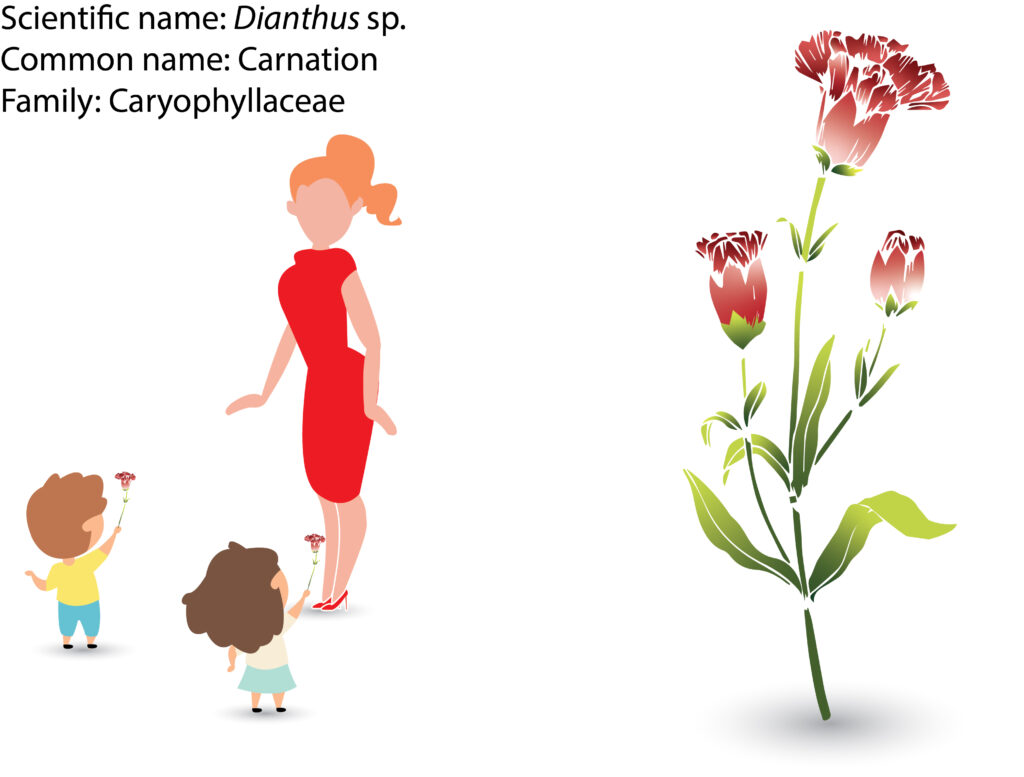The flowers that dedicated to mothers on the coming Mother’s day are carnation, representing the deep love and loyalty to mothers. Scientifically known as Dianthus sp., consists of around three hundred species, carnation is a meaningful flower choice with a long history. The name dianthus can be translated to “flower of love” or “flower of the gods”. It’s mostly found in Europe and Asia, a single species is found in Arctic North America and a few extending to southern Africa.
Carnations have a wide range of colors and rich in combinations and patterns. Often as popular choices for the rock garden or edges of the garden beds. Due to the potential of the colors, much hybridization has been made to create several different groups of pinks and carnations that are bred for specific purposes. It can be planted in places ranging from fully to frost hardy marginally. Furthermore, they are stake taller varieties that prefer a sunny position protected from strong winds with well-drained and alkaline soil. It can be propagated by layering or cutting in the summer by pruning the stems after flowering. Vegetative propagation can be done for the perennials throughout the year, while seeds are produced from the annuals and biennials in the fall or early spring. It is effortless to take care of, and one must watch for the pests like aphids, thrips, and caterpillars. Frequent trimming has to be taken to ensure the density of the plants is less to allow ventilation between the stalks to avoid rust and virus infections as well as other possible diseases.
The cut flowers industry uses border carnations that are annual or perennial plants up to twenty-four inches. Besides, perpetual-flowering carnations are mainly grown in the open. However, they may be grown under cover or semi-shade to produce new blooms. This type of carnation is usually disbudded, leaving only the top bud to develop. On the other hand, American Spray carnations are treated like perpetual except that no disbudding is carried out.
Out of so many carnations, a revival, which is now undergoing the popularly known as Malmaison carnation, resembles the Bourbon rose ‘Souvenir de la Malmaison’. This special carnation is highly perfumed, grown in the way as the perpetual, but they need more care than non-perpetual. In addition, there are many hybrids such as Modern Pink, Old-Fashioned Pinks, Alpine or Rock Pinks, and some other cultivars are self-colored that are flecked, picotee, or laced. Petals narrowly edged with a different color are observed from the cultivars Alpine or Rock Pinks.
The “founder” of Mother’s Day was Anna Marie Jarvis, who was inspired by her mother, who served the wounded soldiers in the American Civil War. Then, she created this special day to remember her deceased mother and all the others, the carnations! There is no fixed variety or color to symbolize the flower of Mother’s Day. However, there are some meanings behind the colors. Generally, pink carnations represent gratitude and love, light red carnations symbolize admiration and adoration, dark red carnation signifies love and affection, while white carnation is the traditional flower to give or wear in remembrance of a deceased mother.

Further reading: